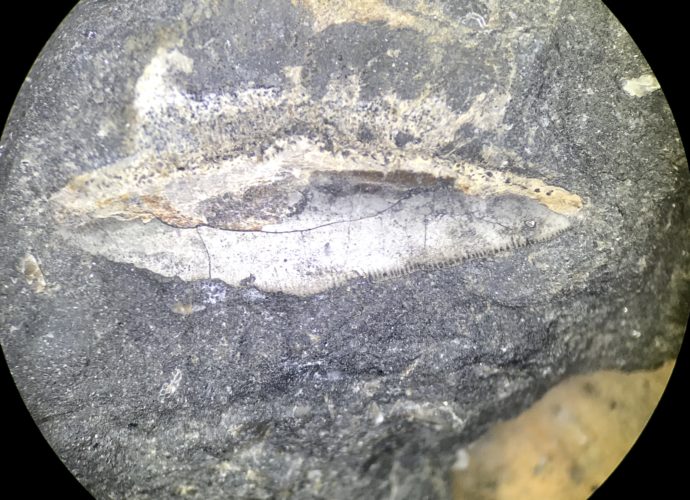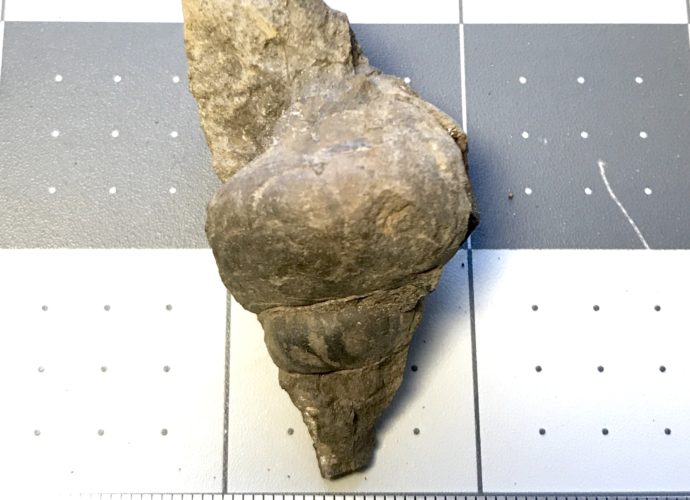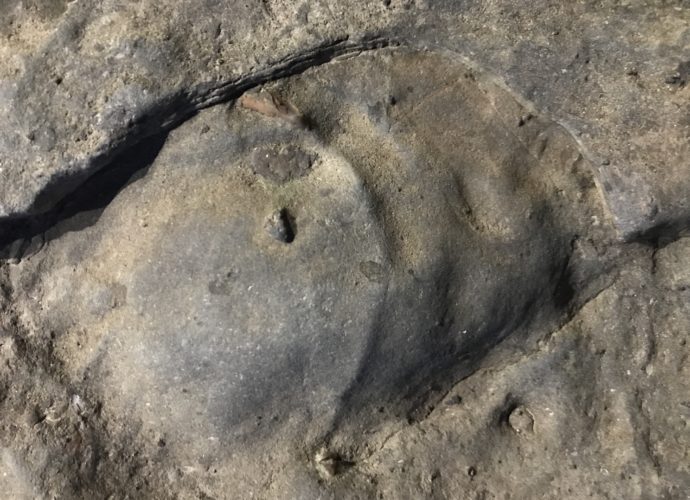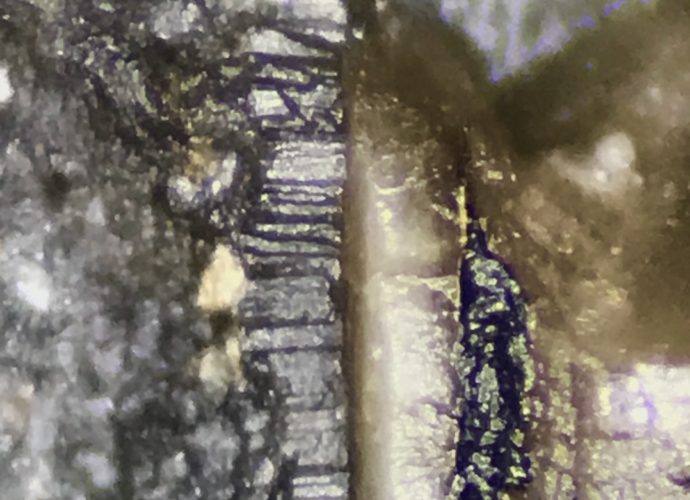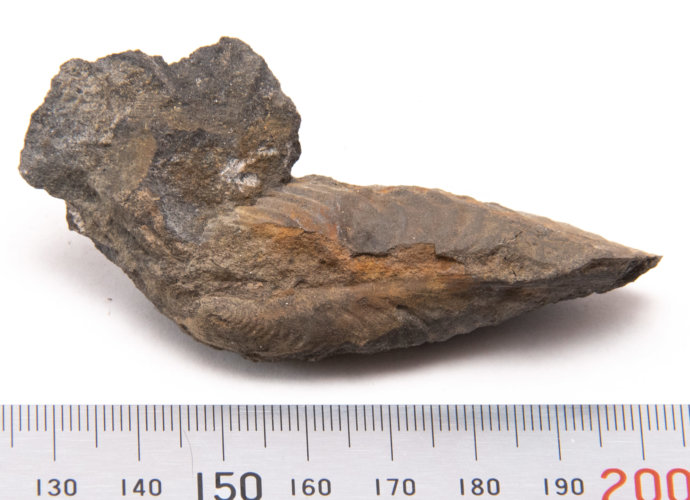Small Gastropod
This small gastropod was found embedded within limestone in what I now call my limestone pile. As I collect limestone from the surrounding hillsides, The pieces I can carry end up here. There are over 62,000 species of gastropods, and they first appear during the early Cambrian period of time.Read More →



